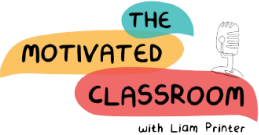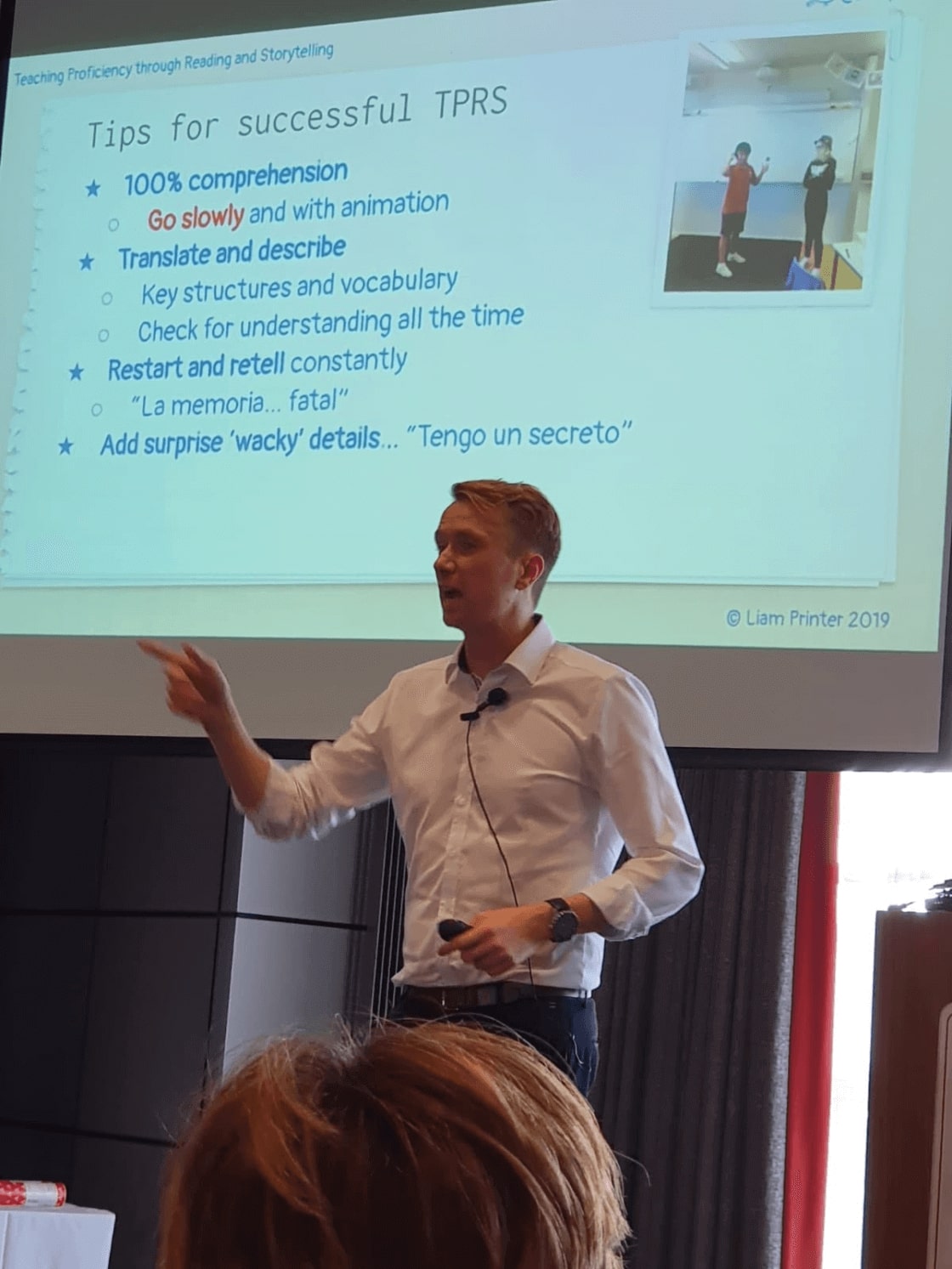Mini whiteboards doing their magic again! This time we are using them to re-tell our latest TPRS (Teaching Proficiency through Reading and Storytelling) story and again they provide a great conversation scaffold for students whilst also ensuring they are active, speaking the target language with various classmates and hopefully engaged in the task!
Here is how it works:
Having already spent a few classes developing our latest story together this task is used as a way to review the key structures from the story.
1. I start by telling the students that because I am really REALLY old I have a terrible memory and they have to help me remember our story. I then proceed to consistenyl tell the story with incorrect details. For example "Brad Pitt estaba en Elefante-land?" to which all the students almost always respond enthusiastically with big smiles saying "No!!!! Es ridiculo! Brad Pitt estaba en Canguro-land" or whatever it may be.
2. Once we have revised the whole story this way as a class I ask each student to divide their mini whiteboard into four quadrants and to draw any four scenes from the story. Only one word is allowed on the entire whiteboard if they choose to use a sign or something in their drawing. I give them 2 minutes to do this, otherwise some people get carried away a turn into mini 'Picassos'!
3. Next we all get up out of our seats (this is key... it keeps them awake!) and go into pairs. If it is an odd number I too will have a whiteboard and have done my world famous matchstick men works of art on it!
4. In their pairs each person has to explain what is happening in their scenes. After about 60 seconds the listener is encouraged to ask questions for clarification or to make incorrect statements that the teller must correct. They then switch over and go through the process again.
5. Here is the key part - once both students have explained their scenes they exchange whiteboards, put the new whiteboard high in the air and have to go and find a new partner. Now they have a new whiteboard to work with. Some students (the first time you do this) might query the strange drawings they have been handed but this is why the listening part of the exercise is so key. In fact, bad drawings are almost better as the lack of detail or clarity forces the new whiteboard proprietor to recall even more details from the story.
6. The whole process now repeats itself with whiteboards swapping various hands throughout the activity.
Students really like this one! They get to move around and talk to different people and are constantly receiving more repetitions of the key structures. At the end you may want to choose one student to explain the scenes on the board they were left with at the end of the task. I have also sometimes taken a whiteboard myself at the end (usually one with particularly good artwork to highlight the creative skills of that student) and again I will explain all scenes with incorrect details to force the students to use those structures again to correct me.
If you have done anything similar or work with TPRS do let me know! I am always keen to hear your feedback.

